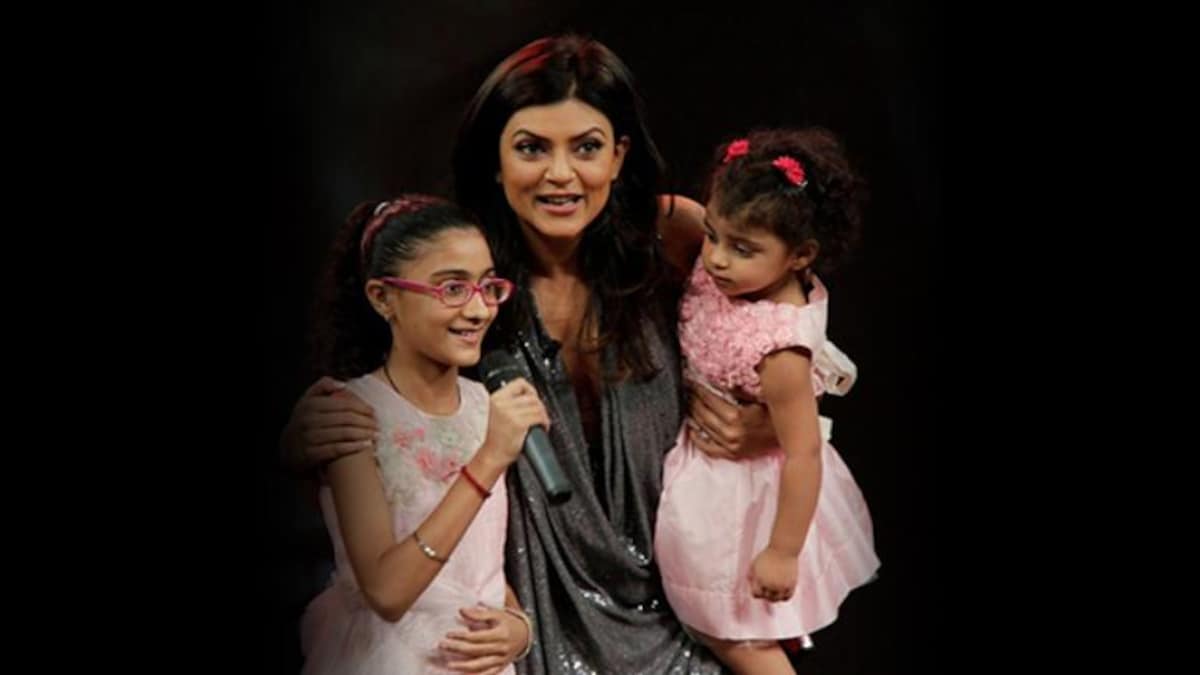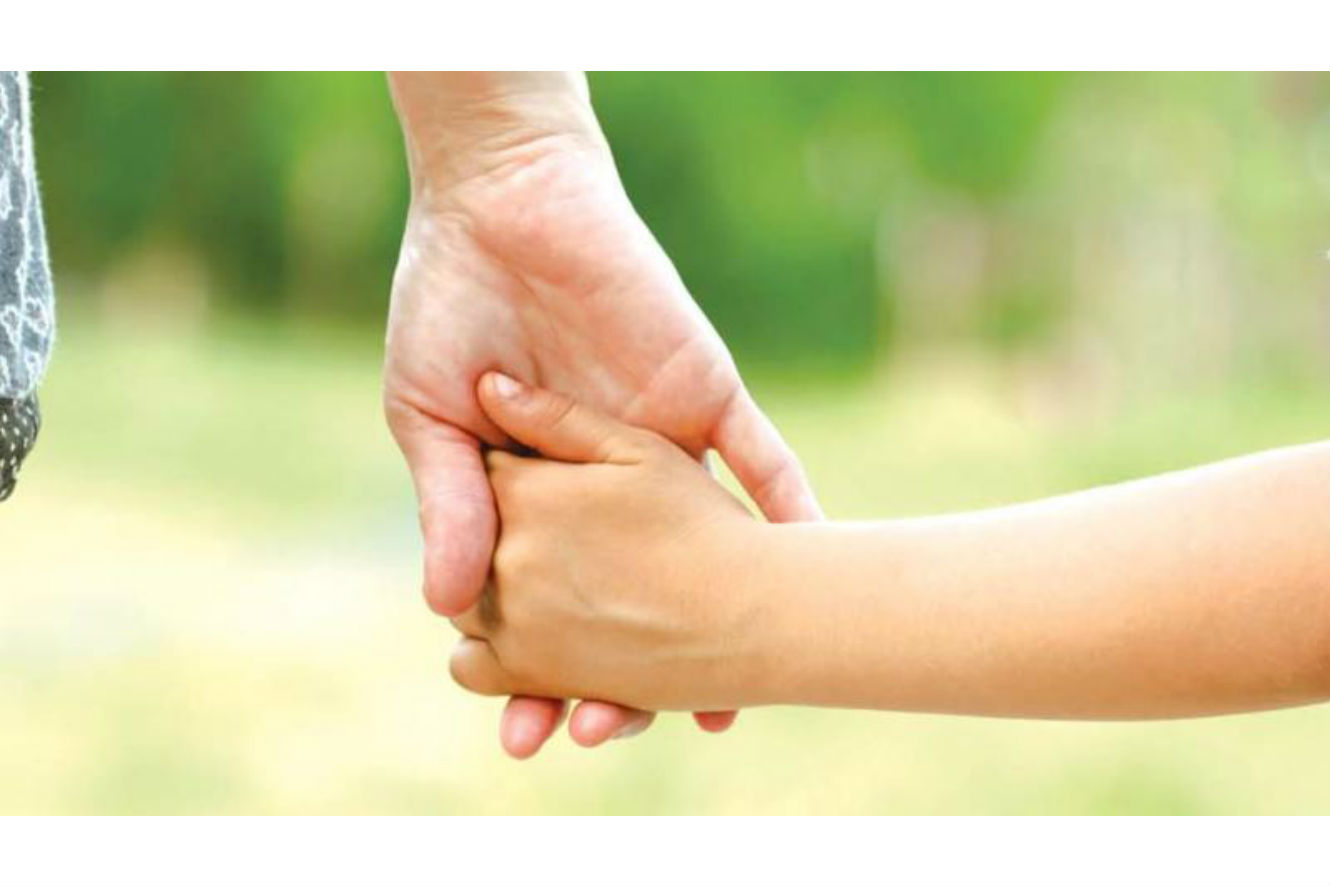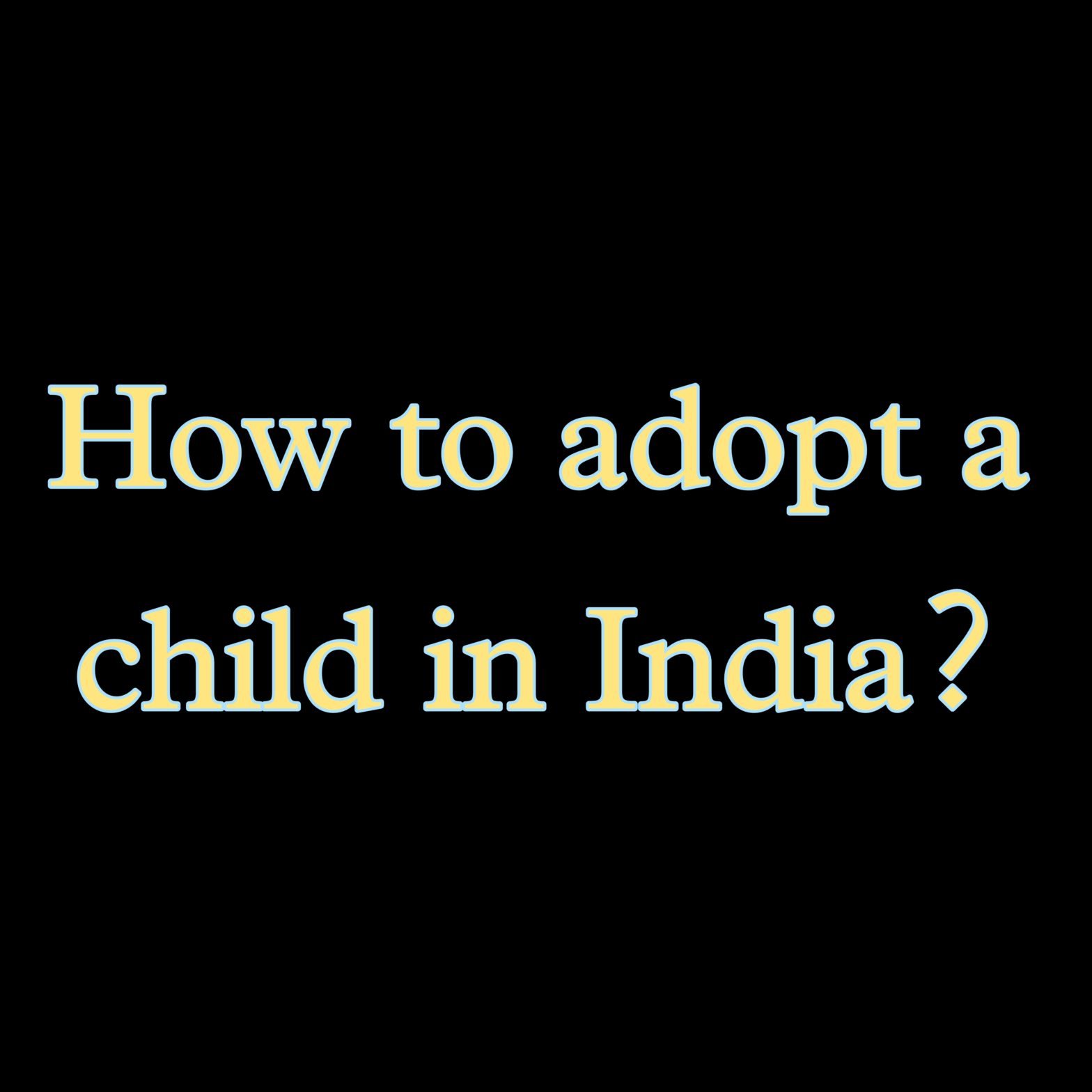The adoption procedure in India is the subject of this essay. The important features of adoption are discussed in this article. It discusses when a person can adopt a child and what standards parents must meet.
Introduction
Adoption is the establishment of a parent-child connection between people who are biologically related. Adoption confers the same mutual rights and obligations between natural parents and the child as a socio-legal process. It provides the most essential route for the care, protection, and upbringing of orphaned and abandoned children who are denied of growing up in family situations. In society, the kid acquires the identity of his or her adoptive parents. Many institutionalized youngsters, as well as childless parents in need of children, are waiting for families. As a result of the adoption process, they are reunited.
History
Adoption has been practiced in India for many years. Because Hinduism is India’s most widely practiced religion, epics and, historical documents have produced lists of saints and royals who have been adopted and who have not been adopted. The Ramayana and Mahabharata are two of Hinduism’s most famous epics that contain references to adoption. In the past, when there was a lack of male progeny, couples would adopt a male child and name him as a legal beneficiary. Children are vital in Hindu tradition, and a deceased parent’s spirit can easily reach salvation if an individual has a child to light the memorial service fire, and salvation can be achieved through children who bring tribe love. The Hindus went to great lengths to develop the institution of adoption.
It is not a stretch to say that no other person on the planet has worked as hard to perfect the adoption system as the Hindus. Regulation has been considered ‘dharma’ by Hindus.
The Dharma embraces the ideas, standards, and laws that govern a man’s whole life. Since the desire for filiation predominated Hindu culture and civilization, the institution of adoption continued to be of enormous importance under Hindu law. The law of adoption in Smritis literature was centered on the parent, not the child. According to the Smrtikaras, only one son could be adopted to ensure the continuity of the family line and to make oblations to the departed ancestors. The Dharmasastras go into great length about the qualities of a male kid for adoption. The adopted son is torn from his biological family and put into the adoptive family as if he were a biological son. However, with the passage of multiple laws, the concept of adoption of various personal laws has undergone significant change.
Adoption in India

The Hindu Adoption and Maintenance Act (HAMA) of 1956 and the Juvenile Justice (Care and Protection of Children) Act of 2000 are the primary laws that govern adoption in India (JJ Act). Both pieces of legislation have different provisions and goals. The Hindu Adoption and Marriage Act (HAMA) is the law that controls Hindu adoption and marriage. Buddhists, Jains, and Sikhs are included in the definition of ‘Hindus.’ It grants an adopted kid all of the rights that a natural-born child would have, including the right to inherit.
The Guardians and Ward Act (GWA), passed in 1980, was the sole way for non-Hindus to become guardians of their community’s children until the JJ Act. Guardianship is dissolved after the ward turns 21 and establishes independent status because the GWA chooses individuals as legal guardians rather than natural parents.
With the establishment of the Child Adoption Resource Information and Guidance System in 2015, a watershed moment in the adoption process occurred (CARINGS). The system serves as a centralized digital database of adoptable children and potential adoptive parents. CARINGS wants to help as many people as possible adopt by making the process as simple as possible.
The adoption process in India is supervised by the Central Adoption Resource Authority (CARA), which is the largest adoption organization in the country and within the country and is part of the Department of Women and Child Care. The basic requirements for adoptive parents to be allowed to adopt a child are:
- An Indian citizen, an NRI, or a foreign citizen can adopt a child in India. All three have separate adoption procedures.
- Anyone, regardless of gender or marital status, is eligible to adopt.
- If a couple is adopting a child, they must have been married for at least two years and have reached a joint agreement on the child’s adoption.
- The age gap between the adoptive parents and the child should not be less than 25 years.
When Can A Child Be Adopted?
According to Indian government laws, every orphan, abandoned, or surrendered child who has been officially certified free for adoption by a child welfare commission is eligible for adoption.
When a child lacks a legal parent or guardian, or when the parents are no longer capable of caring for the child, the youngster is referred to as an orphan.
When a child is deserted or unaccompanied by parents or a guardian, the youngster is considered abandoned by the child welfare committee.
An abandoned child is a child that has been identified by the Child Protection Committee as having been abandoned as a result of a physical, social or emotional factor that is not within the control of parents or guardians.
A child must be “legally free” to be adopted. When the District Child Protection Unit receives an abandoned child, it publishes an alert in state publications with the child’s photograph and details and asks the local police to track down the parents. Only once the police have produced a report stating that the child’s parents are untraceable is the youngster regarded legally free for adoption.
What are the Social Standards that Parents Must Meet?

For potential adoptive parents to be able to adopt a child, CARA has established eligibility standards. Here’s what they are:
- Physical, emotional, and mental stability are required of prospective adoptive parents.
- They should be able to support themselves financially.
- There should be no life-threatening illnesses in either of the prospective parents.
- Except for special-needs children, couples with three or more children are not accepted for adoption.
- Any child of any gender can be adopted by a single woman. A single male, on the other hand, is ineligible to adopt a girl.
- A single parent’s age cannot exceed 55.
- A couple’s combined age cannot be greater than 110 years.
- To be eligible for adoption, the parents’ ages as of the date of registration must meet CARA standards.
What is the procedure for adopting a child in India?
The Central Adoption Resource Authority regulates the adoption process in India, which is governed by several laws. The following stages can be used to understand the procedure for adopting a child in India:
- Registration- Foster parents have to register with a reputable agency. The agencies allowed to make such registrations in India are the Recognized Indian Placement Agencies (RIPA) and the Special Adoption Agencies (SPAs). Prospective adoptive parents can visit their local adoption coordinating agency, where a social worker will explain the procedure and explain the legal details, paperwork and other preparation necessary for enrolment.
- Study and Counseling at Home- A home study will be conducted at the home of the potential adoptive parent by a social worker from the registration agency. The agency may also require the parents to attend counseling sessions to have a better understanding of their motivation, readiness, strengths, and shortcomings. According to CARA regulations, the home study must be completed within three months of registration. The results of the home study and counseling sessions are subsequently presented to the court.
- The Child’s Referral- When a child is available to adopt, the agency will inform the potential couple. The agency will provide medical records, physical examination reports, and other necessary information with the couple, and enable them to spend time with the child when they are satisfied with the information provided.
- Child Acceptance- Once the parents are happy with a child, they will be required to sign a few paperwork relating to the child’s acceptance.
- Submitting a Petition- All required paperwork is forwarded to a lawyer, who creates a petition to be presented in court. When the petition is ready, the adoptive parents must go to court and sign it in front of a judge.
- Pre-adoption foster care- After the adoption petition has been signed in court, the adoptive parents can take the kid to a pre-adoption foster care center to learn about the child’s habits from the nursing staff before taking the child home.
- Court Order- The judge will issue adoption orders once the receipt of the investment is shown.
- Follow up- Following the adoption, the agency must provide the court with follow-up reports on the child’s well-being. This could go on for another 1-2 years.
- Court Hearing- A court hearing must be attended by both the parents and the child. The hearing takes place in a private room with a judge. The judge may ask a few questions and specify the sum that must be invested in the child’s name.
What Kinds of Documents Do You Need to Adopt a Child?
The list of paperwork to prepare for the adoption process is as follows:
- Application for adoption
- 4 x 6 pictures of husband and wife together – 4 copies
- Certificate of marriage and proof of age
- Adoption’s justification
- The couple’s most recent HIV and Hepatitis B test results
- Certificate of Income
- Proof of address
- Information on the investment
- three letters of recommendation
- Any other documents that the agency or the court may demand
Landmark cases

allindianlegalupdates.blogspot.com
Sawan Ram v. Kalawanti, AIR 1967 SC 1761
The court decided that a female Hindu’s adoption would be for both herself and her deceased husband. An adopted son would be considered a member of the deceased husband’s family. Since the adopted child loses all rights to his birth family, corresponding rights in the adoptive family must be substituted. As an adopted son of the spouse, he would thus be entitled to the rights of a family member.
Adoption of Payal @ Sharinee Vinay Pathak and his wife Sonika Sahay @ Pathak, 2010(1) BomCR434
The Court found that the JJ Act allowed for the adoption of specific children, such as those who had been abandoned and needed care and protection. It was a distinct group of youngsters for whom a technique was established.
It was decided that the Hindu Adoption Act prohibited the adoption of a child of the same sex as the Natural child, but that the two Acts should be interpreted together.
As a result, a Hindu couple could adopt a kid under the JJ Act if the child met the criteria for the specific class of children for whom the JJ Act was created. The adoption was permitted in this case because the child met the conditions set forth under the JJ Act.
Shrinivas Krishnarao Kango v. Narayan Devji Kango, 1954 AIR 379
The court determined that when a kid is adopted, the adoption establishes a legal fiction and the child becomes the natural heir. When a Hindu widow adopts her husband, the impact of the adoption is that it relates to the date of the father’s death and makes him eligible for all of the rights of a son.
It was also decided that adoption had the consequence of making the son eligible for a share of the adoptive father’s property. When a claim is filed for someone else’s property, however, the rule of adoption back is not followed. In such circumstances, the norm is that property that has previously been vested in someone cannot be divested.
Current Scenario
Adoption rates in India have been consistently low, but have declined in recent years: According to adoption statistics from the government’s Central Adoption Resource Authority (CARA), there were 5,693 in-country adoptions in 2010, but only 3,276 in 2017-2018. These are terrible statistics for a country with so many people. According to the Indian Society of Assisted Reproduction, at present, there are only 20,000 parents awaiting adoption, compared to 27.5 million couples actively trying to conceive but experiencing infertility.
Conclusion
Adoption is a good cause that brings delight to orphaned or abandoned children. Children’s programs should be prioritized in strategies for domestic human resource development. As the personal rules of all religions have become stagnant, there has been a demand for a universal civil code.
FAQs
Can newborn babies be adopted in India?
Ans. No, a newborn child cannot be adopted.
Can birth parents contact the adopted child?
Ans. Birth relatives may only seek to contact adopted young people after their 18th birthday.
What is the mother of an adopted child called?
Ans. Those who adopted a child were thereafter termed its “guardians,” “foster,” or “adoptive” parents.
Who cannot adopt a child in India?
Ans. No child shall be given in adoption to a couple unless they have at least two years of a stable marital relationship.
What is the best age to adopt a child?
Ans. Most children in need of adoption are between the ages of 9 and 20.
Relevant links
